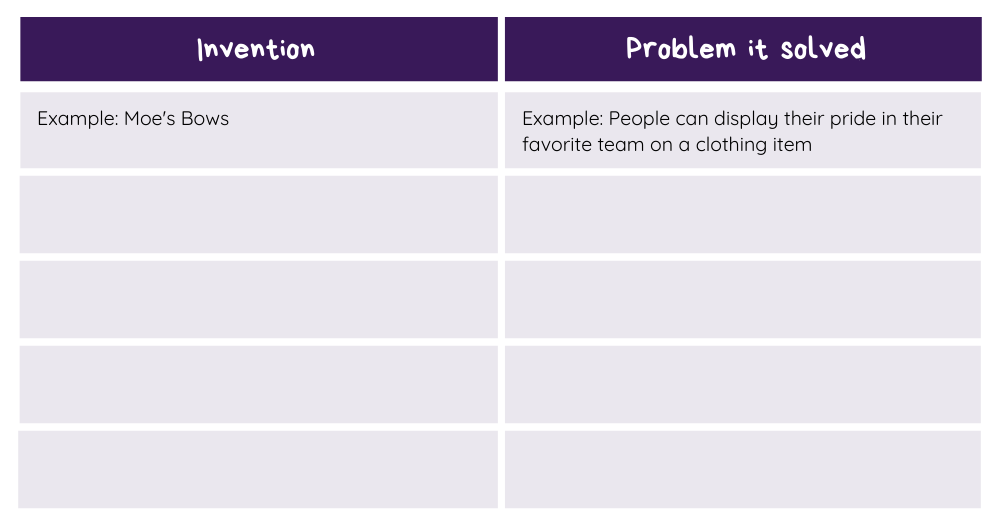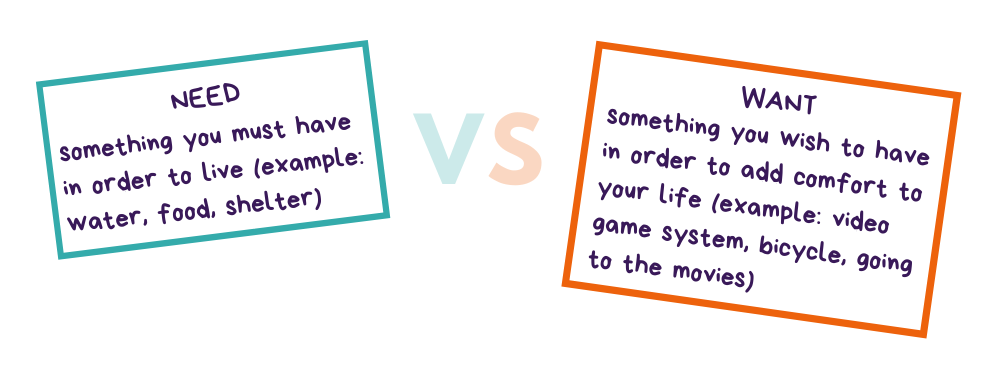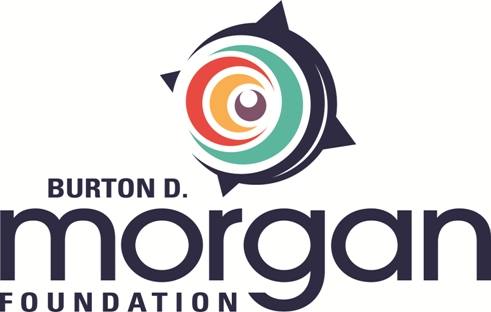.png?language_id=1)
Pain Points
Have you ever seen the show "Shark Tank" on television? It is a show where people present their innovations and products to experienced investors, called sharks, in hopes of making money and increasing sales.

A few people pitching their innovation have done really well, and these business owners have become millionaires! However, some ideas don't catch on at all and those businesses may actually lose money. It is all about knowing how and when to take risks.
The pages that follow will be your engineering and entrepreneurship design notebook. You will want to complete the activities and questions that follow to help design and launch a successful business!
What inspires inventors?
Do you have Velcro on your clothes or bag right now? How long has Velcro been around? What did people do before Velcro? How did the inventor come up with the idea? Learn about its fascinating history and origin by visiting the link below.
Click here: Amazing Inventions Inspired by Animals and Plants
When inventors look at the natural environment (i.e. animals, insects, and plants) for inspiration and try to copy these ideas in a product, that's called biomimicry.
When did you last use a post-it note? How did the inventor come up with the idea? In 1968, a chemical engineer working at 3M accidentally developed an adhesive that was only somewhat sticky (“low-tack”). This sticky substance mimicked the adhesive pads on lizard's feet that enable them to run up and down on objects. Originally, the scientist didn’t think the substance had any important use. However, 3M used the adhesive when it introduced the post-it note in 1980 and it was a hit! Someone may not know there is a way to use a new innovation until there is a need for it in the future.
TO DO (group)Pair up with someone else. See if you can name something that you used in the last 24 hours that wasn't around 20 years ago. Share your list of things with others. You are never too young to be an entrepreneur! Below are some examples of successful youth inventors and their products: |
TO DO (group)After looking at the examples above, notice that a successful inventor sets out to solve a problem people experience. Can you identify what problem the entrepreneurs solved in the innovations listed in the examples above? Try identifying these problems in the table below.  |
These inventions solved a problem. A person that purchases a product or service is called a consumer. All consumers need to make decisions about which products to buy based upon their needs and wants. A person, company, or country that makes or supplies goods for sale is a producer. For instance, a person that is hungry (need) and buys groceries from a store is called a consumer. The store they bought it from is the producer. Can you list some of your needs? How about wants?
A pain point is a problem that you or other consumers are experiencing. It can be the inspiration for a “fix” that may be something others may want to buy.

TO DO (group)
Is there something that stresses you out? Do you wish there was a solution? These stressors are called pain points. Write a pain point on a sheet of paper and crumple it up. When everyone in the group is done with their idea and has crumpled it, throw it across the room. Your classmates should do the same. Keep picking up crumpled pieces of paper and throw them to shuffle them all up in a giant snowball fight! Be safe and careful. After the instructor says that the snowball fight is over, everyone will take turns reading out loud to the group the idea that is on the piece of paper he or she picked up. Remember that when you are brainstorming, the rules include not judging any idea as a bad idea when it is first shared. Everyone needs to keep an open-mind for all ideas. Even an idea that seems odd at the beginning may end up being the most successful! Everyone's ideas on the snowballs will get pinned up and sorted for everyone to view. What themes or categories are similar? Maybe they can be sorted into groups like technology, household goods, foods, pets, and so on? Remember, these pain points need solutions and these solutions are potential products! |

|
|
Produced with funds provided by Burton D. Morgan Foundation |
|
*Think Tank to Shark Tank: From Engineering to Entrepreneurship is in no way affiliated with, associated with, or endorsed by Sony Corporation or Metro-Goldwyn-Mayer Studios Inc.

.png?language_id=1)

